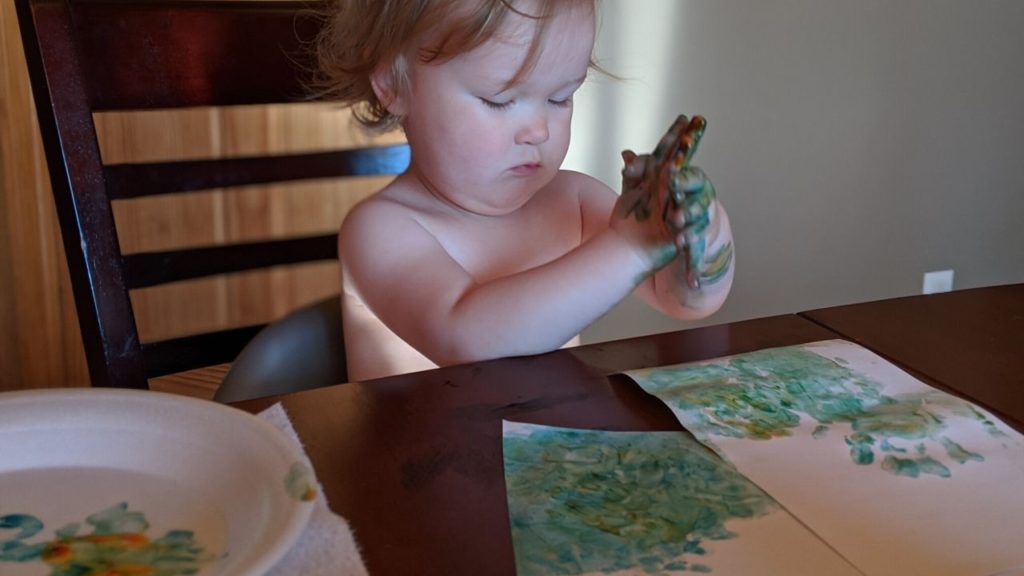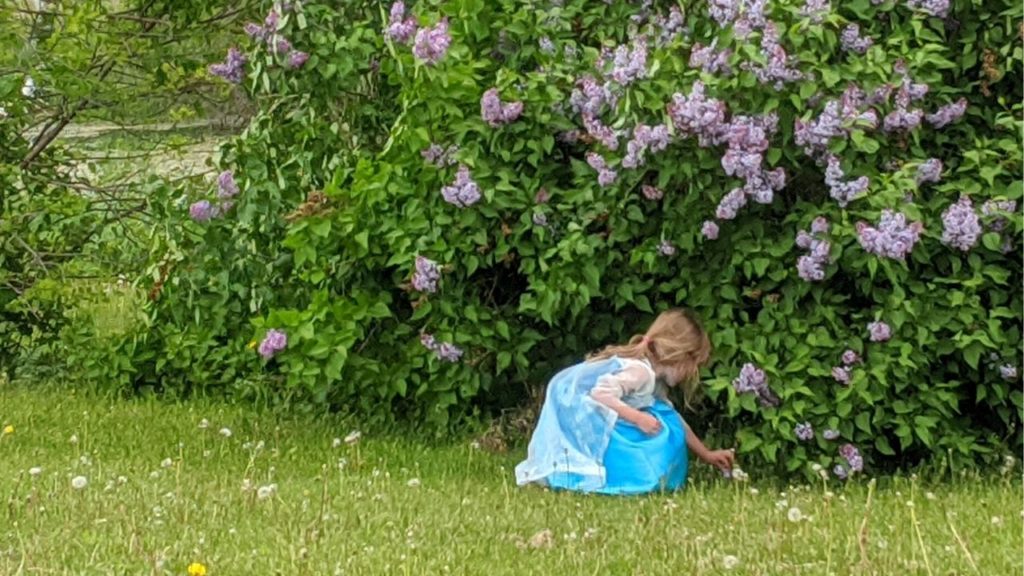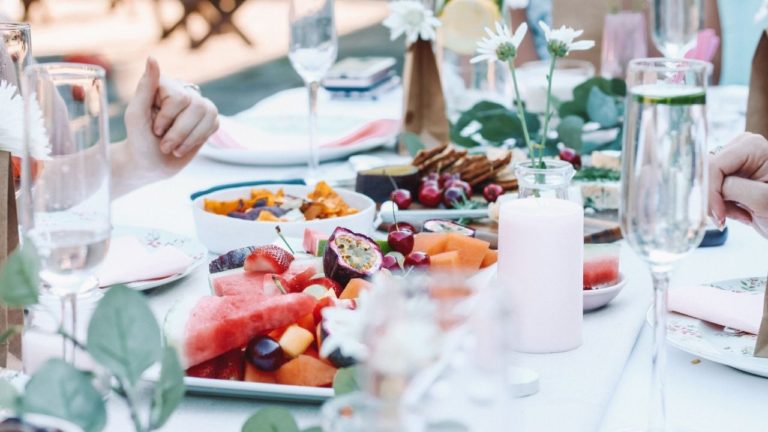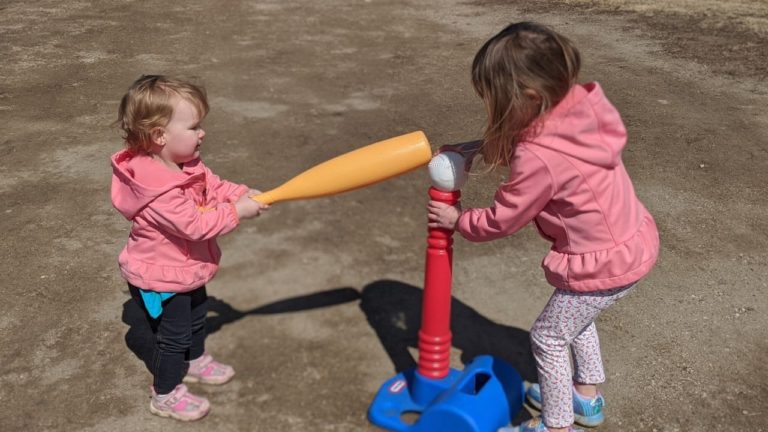7 Fun Early Learning Activities for Toddlers at Home
This post may contain affiliate links and we may earn commissions when you make a purchase through these links (at no extra cost to you). See our disclosure policy for more details.
How to Keep Your Kids Busy With At-Home Learning Activities
Looking for early learning activities for toddlers at home? This one’s for you!
As a parent, you are your child’s first teacher. That’s not to say you need flash cards and worksheets to teach your infant or toddler, though. Toddlers and younger children learn best through engaging in play and participating in everyday activities.
I have an 18-month-old and an almost four-year-old, and while they mostly play independently at home, sometimes they need my help finding activities to keep them busy.
Since I spend a large chunk of my day in my home office, I like to keep lots of activities — puzzles, art supplies, and sensory activities, for example — close at hand. I’m always looking for new, play-based educational activities to add to our stash, though!

Early Learning Activities for Toddlers at Home
Kids don’t even realize that they’re learning important life skills while they’re performing their most important job — playing.
Something as simple as putting together a puzzle can help kids develop their problem solving skills. Singing along with their favorite songs and nursery rhymes over and over again is a great way to learn new words or practice counting.
Those are just a few examples of ways kids can learn through play. Here are seven more early learning activities for toddlers to do at home.
1. Learn about color mixing with finger paints.
Finger paints are awesome because even the youngest toddlers can make a mess, and it washes off easily.

I like to pour a little bit of each color onto a paper plate. From there, they can either experiment with color mixing right on the plate, or apply the colors of their choice to finger painting paper.
Name each color as you go, and let them choose colors to mix together, discussing how mixing the colors together form an entirely new one.
No finger paints on hand? Don’t worry! You can easily make homemade, non-toxic finger paint at home.
Homemade Finger Paint Recipe
Ingredients:
- 1 cup of cold water
- 2 tablespoons cornstarch
- 4 tablespoons sugar
- food coloring
Instructions:
- Combine the cornstarch and sugar in a small saucepan.
- Add the water and mix well.
- Turn heat on medium-high and bring the water to a boil.
- Continuously whisk until it starts to bubble and thicken.
- Remove from the heat and let cool.
- Divide the mixture into small glass jars and stir in food coloring.
2. Make alphabet soup with foam letters and a water table.
This is a fun outdoor learning activity for summer, but it can easily be done indoors, too.
If your kids are anything like mine, they’re probably OBSESSED with water! Mine will happily splash around in any water they can find, even if it’s just the bathroom sink.
For this learning activity, you’ll need foam letters, water, a ladle or something for scooping, and either a water table, bowl, pot, or a plastic bin. If you’re indoors, you’ll want to either do this on a water-safe surface (the bathroom floor works!) or lay down some plastic to protect your flooring. This could get messy!
Depending on your child’s developmental stage, he or she might be able to recognize some of the letters, or maybe not.
Either way, scooping the letters out of the water is a great way to work on dexterity and hand-eye coordination.
As your child scoops each letter, work together to name it. Older children might even be able to sort the letters by alphabetical order, vowels and consonants, or even to spell names or words.
Alphabet soup is the perfect play-based educational activity because it can be customized to fit your child’s capabilities. Plus, what kid doesn’t love water play?
3. Practice scooping with a sensory bin.
Sensory bins are awesome for a number of reasons. They help kids with:
- language development
- fine motor skills
- gross motor skills
- problem solving
- cognitive growth
- enhancing memory
Plus, you can use whatever you have on hand to create a sensory bin.

The first step is to find a container, whether it’s a plastic tote, water table, or a large stockpot. If you plan on using it more than once, a container with a lid works best.
Then, you’ll need to fill it with something: dry beans, rice, sand, cereal, etc.
Of course, you should always supervise your kids when they are playing with the sensory bin.
Now, add some cups and scoops, along with small toys, and get busy scoopin’!
Pro mom tip: I like to use crispy rice cereal for older babies and young toddlers, because I don’t want them to accidentally swallow or choke on a bean. And this way, they can eat the cereal if they get hungry.
4. Count together during a scavenger hunt.
Turn your scavenger hunt into a learning activity for toddlers with the incorporation of numbers and counting. Even my 18-month-old can count to ten, so it’s never too early to start learning about numbers!
While a scavenger hunt is a great excuse to get outdoors and learn about nature, it is possible to have an indoor scavenger hunt as well.
There are numerous ways to teach your toddler about numbers during a scavenger hunt, both indoors and outdoors.
Help your child find:
- 10 rocks
- 5 pine cones
- Something with 6 sides
- A book about counting
- Toys that have 2 different colors
- Something with 4 wheels
- 12 red blocks
These are just a few ideas, but of course you will want to customize the scavenger hunt to whatever is in your house or yard.
A scavenger hunt is an excellent way to build your child’s vocabulary. In addition to numbers and counting, incorporate colors, shapes, and other characteristics into this fun, play-based activity to help your toddler learn new words.
It’s so much fun, they’ll never even realize they are learning!
5. Discuss animal names and sounds while bathing them.
Let’s head back to water play for a minute.
Not only do kids love to play with water, but bubbles seem to be a huge hit, too — at least, they are with my girls! Fill up a bucket of soapy water, then give each child a washcloth and some plastic animals to bathe.
We have a huge bucket of Safari animals that my daughters enjoy playing with, even without water.
As they scrub each animal clean, discuss the name of that animal and the sound it makes. Not sure what sound it makes? Look it up online and learn together!
Not only is this an opportunity to teach your toddler animal names and sounds, but it could be turned into a lesson in compassion and the proper way of caring for animals, as well.
6. Dress up and act out your child’s favorite story.
My eldest daughter is incredibly dramatic and has a wild imagination, which I suspect is true of most kids her age.

On a daily basis, she dresses up as her current favorite character, and provides me with very specific instructions on how to do her hair. All day long, she acts out certain scenes from her favorite stories and talks non-stop about what the other characters have been up to.
I just go along with it.
And sometimes, at her request, I put on some cat ears and a tail and play along with her.
Dramatic play — or pretend play — is a wonderful emotional outlet that helps them work out various life issues. It helps them learn more about themselves and the world, and it allows kids to walk in someone else’s shoes for a little while.
7. Experiment with gravity and balance by building a block tower.
Your kids probably have building blocks, Legos, or some type of toys you can use for building a tower. If not, test your imagination and use items around the house to create your own fun, early learning activities for toddlers.
A few ideas include:
- cereal
- marshmallows
- books
- boxes
- plastic containers
- rocks
Work together to see how tall you can build your tower before it falls.
Toddlers might not necessarily understand the “why” behind it, but stacking is a great early learning activity that will introduce them to the concepts of gravity and balance, among a number of other things.
Keep little learners happy with a STEAM activity box!
Have you already done all the things on this list of play-based educational activities? Are you running out of early learning activities for toddlers at home?
Done-for-you STEM and STEAM kits are the perfect solution for busy parents who want to keep their kiddos occupied with educational activities.
We partnered with Green Kid Crafts to bring you this list of the best STEAM kits for kids age three and up (although some are great for younger toddlers, too!).
Each kit revolves around a theme, and contains 4-6 art and science based activities to keep them busy for hours. You can read our review of the Save the Bees box here, and here is our Rainbow Science Box review.
More on Toddler Activities:
18 Engaging Activities to Teach Colors to Toddlers & Preschoolers
21 Must-Have Arts & Craft Supplies for Toddlers and Preschoolers








I love this post! So many different ideas to keep kids busy!
Thanks, Akshaya! It can be a little difficult to keep them busy, especially now that we’re spending so much time at home. :o)
Pinned! I miss the days when my kids were toddlers! It was so cute and endearing to see them discover the world with their little hands 😍 (my baby will start kindergarten in September… Time sure flies)
Thanks for pinning it! Time sure does fly, my eldest will be a preschooler this fall!
So many wonderful ideas! My kiddos would love the water table idea, and it’s been hot out so we will be trying it soon! Always great when we can combine learning and fun for little ones
Our water table has been a HUGE hit with the girls already, and summer is just getting started! 🙂